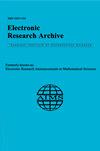基于多准则决策方法的高性能超级电容器纳米结构电极材料评价
IF 1
4区 数学
Q1 MATHEMATICS
引用次数: 0
摘要
提高电极材料的性能以提高商用超级电容器的性能是一个值得关注的研究领域。近年来,大量的研究致力于通过改进新型电极材料来提高超级电容器的电化学性能。纳米复合结构提供了更大的比表面积(SSA)和更低的离子/电子扩散轨迹,从而提高了超级电容器的能量密度和比电容。这些重要的特性为电极材料在不同的应用领域提供了广泛的潜力。例如,它们在便携式电子系统中的应用,如全固态超级电容器、柔性/透明超级电容器和混合超级电容器。本文提出了一种评价高性能超级电容器(HPSCs)纳米结构电极材料优先级的多准则模型。本文将层次分析法(AHP)与基于平均解距离的评价(EDAS)和灰色关联分析法(GRA)相结合。在这里,粗糙的概念解决了群体决策过程中产生的不确定性和nem属性的模糊值。采用改进的R-AHP法,根据多专家的意见确定各指标的权重。结果表明,比电容(SC)和能量密度(ED)是最重要的判据。将R-AHP与R-EDAS和R-GRA模型相结合,对14个nem进行评价。将R-EDAS法与R-GRA法的结果进行了比较。所提出的综合方法的结果证实,它产生了可靠和有信誉的排名,这将为进一步的应用提供框架,并帮助物理学家通过评估各种替代方案找到最佳材料。本文章由计算机程序翻译,如有差异,请以英文原文为准。
Evaluation of nanostructured electrode materials for high-performance supercapacitors using multiple-criteria decision-making approach
The enhancement of electrode materials' properties for improving mercantile supercapacitors' performances is a remarkable research area. Throughout recent years, a significant amount of research has been devoted to improving the electrochemical performance of supercapacitors via the improvement of novel electrode materials. The nanocomposite structure provides a greater specific surface area (SSA) and lower ion/electron diffusion tracks, consequently enhancing supercapacitors' energy density and specific capacitance. These significant properties offer a wide range of potential for the electrode materials to be applied in diverse applications. For instance, their applications are in portable electronic systems such as all-solid-state supercapacitors, flexible/transparent supercapacitors and hybrid supercapacitors. The authors of this paper introduced a multi-criteria model to assess the priority of nanostructured electrode materials (NEMs) for high-performance supercapacitors (HPSCs). This work combines Analytic Hierarchy Process (AHP) with the Evaluation Based on Distance from Average Solution (EDAS) and Grey Relational Analysis (GRA) methods. Herein, the rough concept addresses the uncertainties resulting from the group decision-making process and the vague values of the properties of the NEMs. The modified R-AHP method was employed to find the criteria weights based on the multi-experts' opinions. The results reveal that specific capacitance (SC) and energy density (ED) are the most important criteria. R-AHP was integrated with R-EDAS and R-GRA models to evaluate the fourteen NEMs. The results of the R-EDAS method were compared with those provided by the R-GRA method. The results of the proposed integrated approach confirmed that it results in reliable and reputable ranks that will provide a framework for further applications and help physicists find optimal materials by evaluating various alternatives.
求助全文
通过发布文献求助,成功后即可免费获取论文全文。
去求助

 求助内容:
求助内容: 应助结果提醒方式:
应助结果提醒方式:


